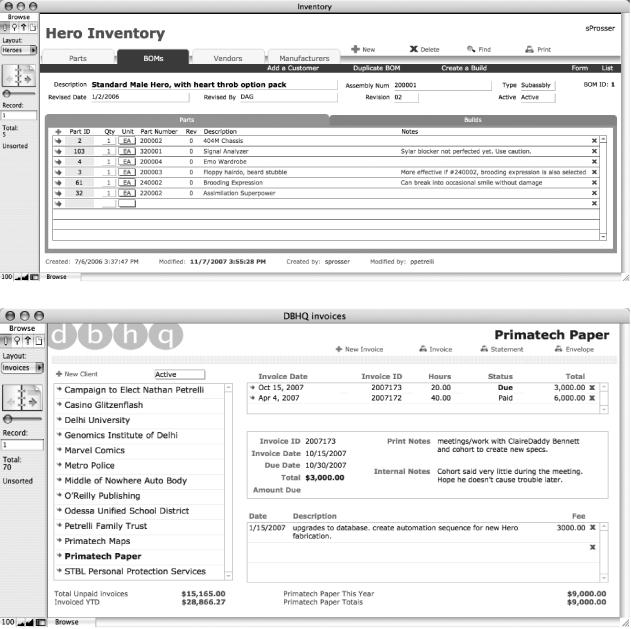For many people, the word “database” conjures up an image of a computer and a vast collection of information you can access only on a computer screen. But actually, databases are all around you—a phone book, a cookbook, and an encyclopedia are all databases. So is the stock page in your newspaper. In fact, if you look up the word “database” in a dictionary (which is a database, too), you’ll probably read that a database is just a collection of information, or data.
Ideally, a database’s information is organized so that you can easily find what you’re looking for. For example, a Rolodex has information about people organized alphabetically. You can find any person’s card pretty quickly because you know approximately where it is, even though there may be hundreds of cards to look through. But physical databases like this example all have major limitations compared to those that are stored on a computer. What if you want to get a list of all your associates in California? A Rolodex isn’t organized that way, so you have to look through every card one by one. That kind of tedium is one of the reasons so many Rolodexes are now at the bottom of landfills, and it’s one of the biggest problems a computer database program like FileMaker Pro can help you avoid.
The term database program means a computer program designed to help you build a database. Lots of computer programs use a database in one way or another; for example, your email program tracks hundreds of email messages you’ve sent and received, but it isn’t a database program. A database program lets you build your own database and customize it to meet your specific needs.
A database stored on a computer isn’t much different in theory than one painstakingly collected on Rolodex cards or other forms of paper. It contains lots of information, like addresses, Zip codes, and phone numbers, and organizes that info in useful ways (see Figure I-1 for an example). But because it’s stored on a computer, you can organize the same information in numerous ways with ease—say, by name or by state. Computers also make searching databases a whole lot faster. In fact, a computer can often look through almost any amount of data in less than a second, which is a lot quicker than flipping through all your Rolodex cards to find everyone who lives in Kansas.
Figure I-1. FileMaker Pro lets you do just about anything with the information you give it. You can use it like a Rolodex to simply store and retrieve information, or run your entire business with this one program. FileMaker’s built-in number-crunching and word-processing tools let you track people, processes, and things, creating all your reports, correspondence, and collateral documents along the way. Here are two examples of real-world FileMaker databases created for very different kinds of businesses.
This book will teach you how FileMaker stores your information and how you can rearrange that information and get the answers to meaningful questions like which employees are due for performance reviews, who’s coming to the company picnic, and which amusement park has the best deal on Laser Tag so you can throw a party for your top 50 performers. You won’t have to learn to think like a programmer (or know the arcane terms they use), but you will learn how to bend FileMaker Pro’s hidden power to your will and make it tell you everything it knows about your company, your stock portfolio, or how much you’ve spent on the replacement parts for the ’58 Bonneville Sport Coupe you’re rebuilding.
Get FileMaker Pro 9: The Missing Manual now with the O’Reilly learning platform.
O’Reilly members experience books, live events, courses curated by job role, and more from O’Reilly and nearly 200 top publishers.


